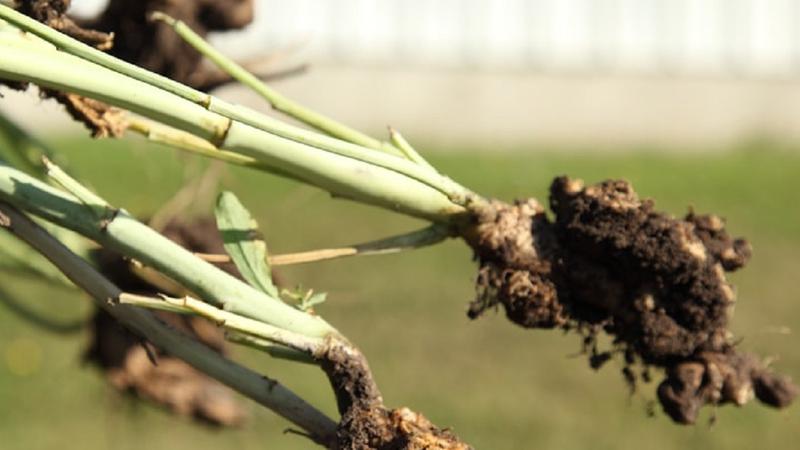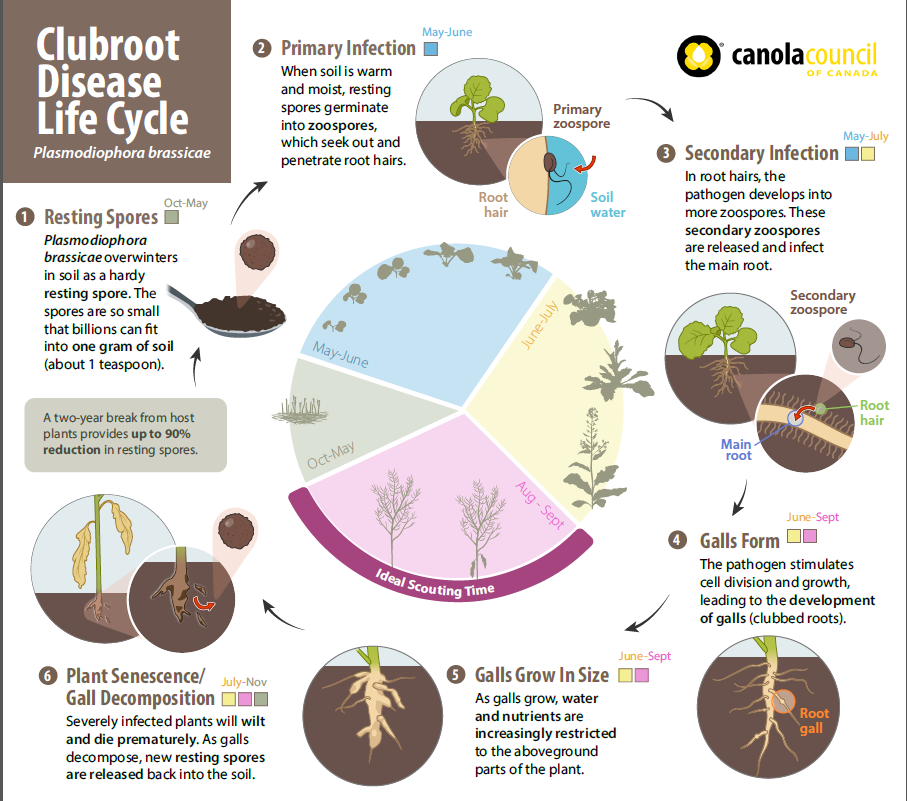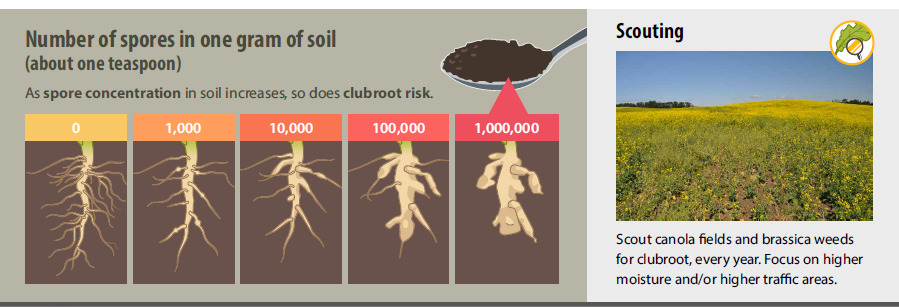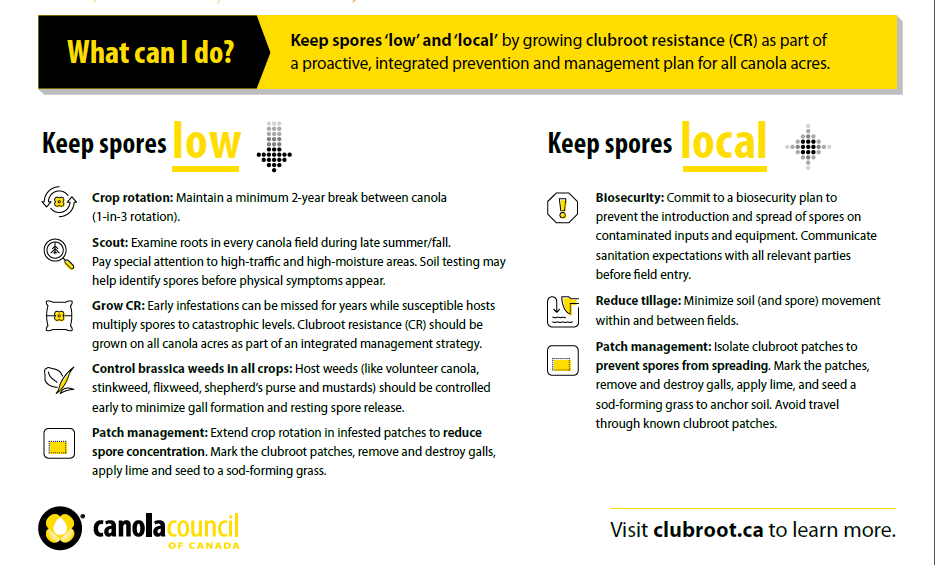
Help keep canola clubroot “low and local”
LETHBRIDGE, AB. — With canola crops now in the bin, the Canola Council of Canada is taking the opportunity to remind producers about growing clubroot-resistant canola and the steps needed to keep disease spores from spreading.
Autumn Barnes, an agronomy specialist and clubroot lead with the Canola Council of Canada, has penned an article on how to tackle clubroot and steps producers need to keep in mind when planning next spring’s planting, as clubroot pathogens are able to over-winter.
Tips to curtail clubroot –
A new factsheet available at clubroot.ca distills the key practices to mitigate clubroot and maintain profitability.






